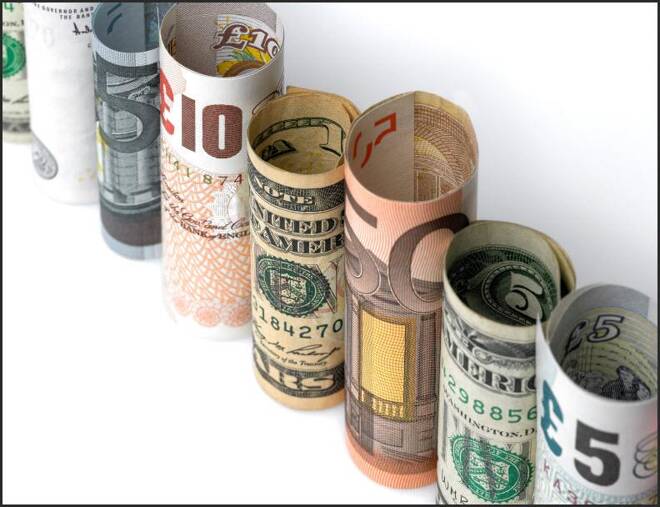Advertisement
Advertisement
What is a Carry Trade
By:
When an investor speculates in the currency market or a corporate treasurer hedges currency exposure they are purchasing or selling a currency pair which is the exchange of one currency for another.
While many brokers offer spot currency products that do not require the physical exchange of one currency for another, most trades are physical trades that require the transfer of one countries currency for another.
The majority of trades that take place are spot trades which settle in the currency markets two days after the transaction date. If a trade takes place for settlement at a future date beyond the normal spot, the value of the currency pair changes based on the forward rate of the currency pair. The forward rate incorporates the difference between one countries interest rates and its counterparts.
For example, to calculate the forward rate for the USD/JPY at a future date in 1-month. Traders will look at the spot rate and then add or subtract the difference between the 1-month Yen interest rate and the 1-month US rate. Since Yen 1-month interest rates are less than US interest rates, a trader that want to purchase the USD and sell the Yen will need to pay away the value of owning US fixed income products relative to Japanese fixed income products.
The interest rate differential is divided by the spot rate to create forward points which would then be added to the USD/JPY for an investor that is looking to purchase the currency pair with a settlement in one month.
Since there is an advantage to owning the currency with the higher interest rate, an investor can theoretically earn money from holding a currency pair for an extended period if the exchange rate does not move.
For example, if US interest rates 1-year interest rates are .5% higher than Japanese interest rates, than a trader than purchases USD/JPY that settles in one year will benefit by .5% of the exchange rate remains unchanged. This makes it very attractive to own the higher yielding currency.
The chart above is an example of how a carry trade could work. By owning the USD over the JPY for 2-years a traders would earn the difference between the 2-year rates which is 70 basis points. This is known as the carry.
Buy owning the higher yielding currency a traders has entered into a carry trade as the cost to carry the currency with the lower rate generates a gain. If you can borrow a currency at a rate that is lower than the currency you are lending (that you are long), then you can use the proceeds (in the case of the USD/JPY .5%) to invest in other products such as stocks or bonds.
About the Author
David Beckerauthor
David Becker focuses his attention on various consulting and portfolio management activities at Fortuity LLC, where he currently provides oversight for a multimillion-dollar portfolio consisting of commodities, debt, equities, real estate, and more.
Advertisement
